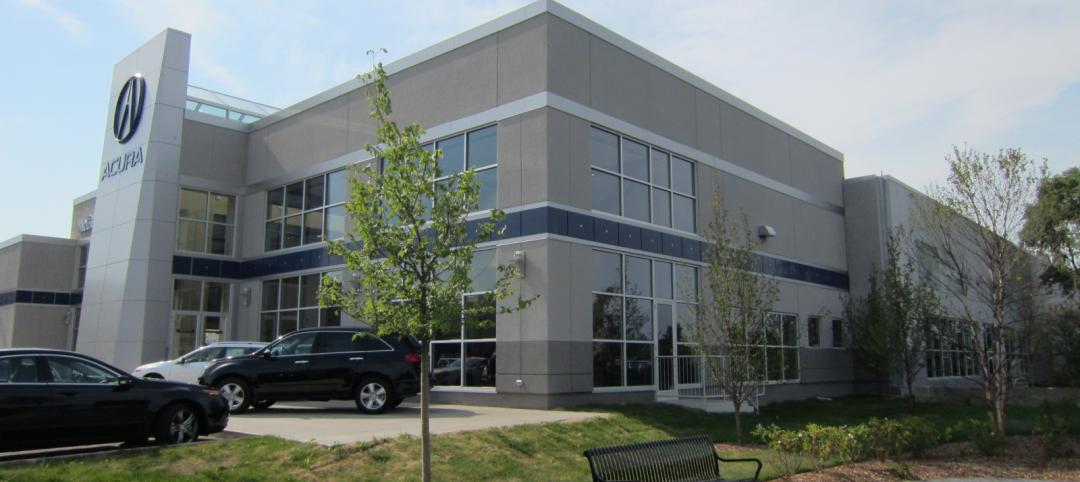This year marks Gensler’s 50th anniversary. As it looks toward the future, the planet’s largest architectural design firm sees a world “on the cusp of breakthroughs made possible by innovation, urbanization, and global connectivity,” write co-CEOs David Gensler and Andy Cohen, FAIA, IIDA; and Diane Hoskins, FAIA, in Gensler’s just-released Design Forecast 2015.
Some of the topics Gensler addresses in its 73-page forecast—such as the role of design in increasingly citified environments, where generational demarcations are not always clear and where technological advances proceed unabated—might sound familiar to anyone who’s been keeping up with current events within the nonresidential construction universe.
However, many other AEC firms are probably thinking about how they should respond to the same megatrends that Gensler identifies as shaping design:
• Workplaces are rethinking the nature of work itself as social media and business networks mesh.
• As more people move into cities, innovation will be the key to pragmatic and affordable approaches to planning.
• If technology is raising the stakes on just about everything, where does the human dimension come in?
• In tackling problems revolving around infrastructure resilience, societies are leaning toward holistic solutions, active management, and stewardship.
• As density becomes the abiding development strategy, developers and owners are attracting the best tenants with rich amenities and transit-served destinations.
• Good data and strong analytics are crucial for keeping up with generational cohorts that are “moving targets.”
Gensler’s Forecast also cites 27 trends that are directly impacting the firm’s three primary practices: Workplace, Community, and Lifestyle. Here’s a sampling:
Commercial office buildings “are less of a stand-alone real estate product and more a part of mixed use.” That use, more often than not, is a combination that goes beyond towers to provide “different scales, and … promote[s] the kind of informal interaction that generates higher retail traffic and evening and weekend activity.”
An organizational imperative for an energy sector that must stay flexible and adaptable in a volatile world “is to align: one brand, mission, purpose, and workforce.”
 Corporate campuses are shedding their stodgy image as disconnected, disparate buildings. By consolidating operations “under one roof,” companies maximize interactions, foster collaboration and innovation, and promote a sense of community. Photo: Hyundai Motor America, Fountain Valley, Calif. / courtesy Gensler
Corporate campuses are shedding their stodgy image as disconnected, disparate buildings. By consolidating operations “under one roof,” companies maximize interactions, foster collaboration and innovation, and promote a sense of community. Photo: Hyundai Motor America, Fountain Valley, Calif. / courtesy Gensler
Technology “disrupts, so tech companies are questioning how buildings work. That means rethinking their performance and exploring innovations like untethered power.”
A burgeoning media sector, despite its equipment-heavy context, is still a creative industry that favors workspaces that are “open, amenity-filled, flexible in relation to new technologies, and capable of being scaled up fast for growth.”
Mass customization will drive product design, as large cities serve as micro-markets for products and innovation hubs that influence broader consumer tastes.
Life sciences companies are replacing traditional labs with technically complex workplaces that support the latest scientific advances, and allow researchers to form interdisciplinary teams for collaboration.
Next-generation aircraft provides a growth opportunity for large, non-hub airports to offer direct international service, city to city, bypassing existing gateway hubs. Global mega-hubs will grow and evolve as leisure destinations with more space dedicated to retail and dining. “Primed by smart devices, the passenger experience will take cues from retail centers and hotels.”
Consolidation, demographic shifts, and new competition are causing “massive” changes in the healthcare sector. Consumers want more choices. Work-based wellness is entering into the healthcare space. And the rise in specialty care centers reflects the movement toward personalized medicine that integrates clinical innovations with tailored care delivery.
What’s differentiating retail centers in an age of online shopping is their engagement with customers and communities. “As retailers’ real and digital worlds converge, the browse/buy function is evolving.” And word of mouth, so important to sales, “is part of the smartphone data that give retailers the bigger picture.”
In a digital era, when an experience that can’t be shared in real time “didn’t happen,” the goal of entertainment projects needs to be to connect with audiences before, during and after the event “so people are engaged and the ROI is higher.”
The hospitality sector is working overtime to be informal and welcoming, by integrating local culture and letting the larger community in whenever they can.
Countries in the Middle East and Asia are competing for which can build the tallest building. But the success of these “vertical cities” will ultimately be measured “by how well they attract and support tenants, and how well they fit with and enliven the city at their feet.”
Gensler foresees tomorrow’s mixed-use towers as anchors for diverse, walkable and transit-served districts.
Read the Gensler’s Design Forecast 2015.
Related Stories
| Aug 3, 2012
Nonres construction spending to increase through 2012, growth projected for 2013
Commercial and industrial projects poised to lead building sectors.
| Jul 31, 2012
Thornton Tomasetti announces four promotions in Chicago office
Promotions in Thornton Tomasetti office key on industy veterans.
| Jul 25, 2012
EwingCole adds healthcare director to D.C. office
Schultz brings over 25 years of proven experience in planning and designing healthcare, medical research, and government medical facilities.
| Jul 25, 2012
Contract awarded for Gaillard Municipal Auditorium renovations in Charleston, S.C.
Seeking LEED Silver certification, the project will begin in August and is slated for completion in December 2014.
| Jul 24, 2012
Boyer joins Thornton Tomasetti as vice president in New York office
Boyer will support Thornton Tomasetti’s Building Performance and Property Loss Consulting practices in the East U.S. region as well as nationally.
| Jul 24, 2012
Dragon Valley Retail at epicenter of Yongsan International Business District
Masterplanned by architect Daniel Libeskind, the Yongsan IBD encompasses ten city blocks and includes a collection of high-rise residences and commercial buildings.
| Jul 23, 2012
Venturi Scott Brown and Associates Becomes VSBA, LLC
After over fifty years as one of the world’s most renowned architects, Bob Venturi has retired from practice, while Denise Scott Brown continues to publish and present her work.
| Jul 23, 2012
Giants 300 Firm Index 2012
An alphabetical index of the Giants 300 AEC firms and their ranking in specific categories.
| Jul 23, 2012
Haynes Whaley announces leadership transition
Pronier has worked in the construction industry for the past 30 years.
| Jul 23, 2012
Missner Group completes construction of Chicago auto dealership
The Missner Group also incorporated numerous sustainable improvements to the property including the implementation of a vegetative roof, and the utilization of permeable pavers for the parking lot.
















